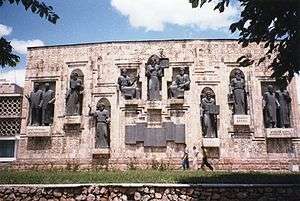Tajik literature

Tajik literature and its history is bound up with the standardisation of the Tajik language. Tajik literary centres include the cities of Bukhara and Samarkand, currently in present-day Uzbekistan but with a majority Tajik population.
During the Soviet era, the principal literary output was socialist realism in nature.
Three writers dominated the first generation of Soviet Tajik literature. Sadriddin Aini (1878-1954), a Jadidist writer and educator who turned communist, began as a poet but wrote primarily prose in the Soviet era. His works include three major novels dealing with social issues in the region and memoirs that depict life in the Bukhoro Khanate. Aini became the first president of Tajikistan's Academy of Sciences.
Abu'l-Qasem Lahuti (1887-1957; in Tajik, Abdulqosim Lohuti) was an Iranian poet who emigrated to the Soviet Union for political reasons and eventually settled in Tajikistan. He wrote both lyric poetry and "socialist realist" verse. Another poet, Mirzo Tursunzoda (1911-77), collected Tajik oral literature, wrote poetry of his own about social change in Tajikistan, and turned out various works on popular political themes of the moment. Since the generation that included those three writers, Tajikistan has produced numerous poets, novelists, short story writers, and playwrights.
Notable writers
- Sadriddin Aini
- Mirzo Abdulvohid Munzim
- Pairav Sulaimoni
- Abulqosim Lohuti
- Sadri Ziyo
- Sotym Ulughzoda
- Mirzo Tursunzoda
- Laiq Sher-Ali
- Bozor Sobir
- Muhammadjon Shukurov
See also
References
- Perry, J. R. (1996) "Tajik literature: Seventy years is longer than the millennium" in World Literature Today, Vol. 70 Issue 3, p. 571
- Library of Congress - Country Studies - Tajikistan